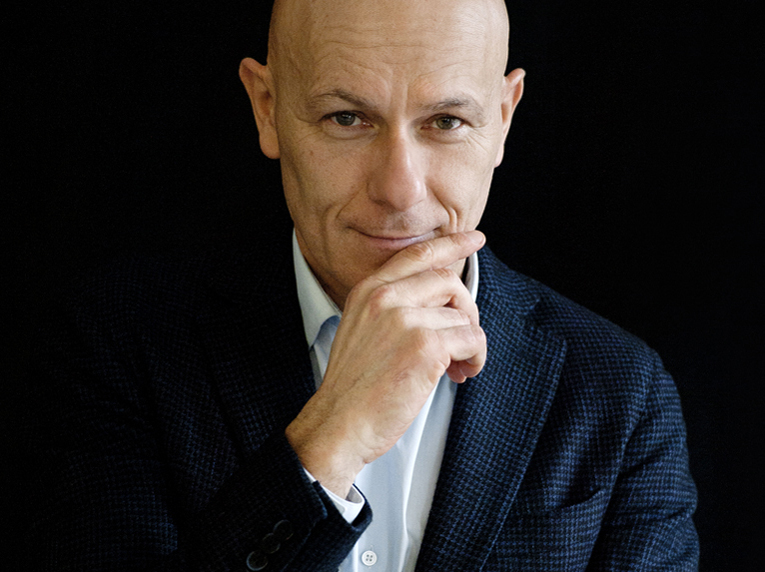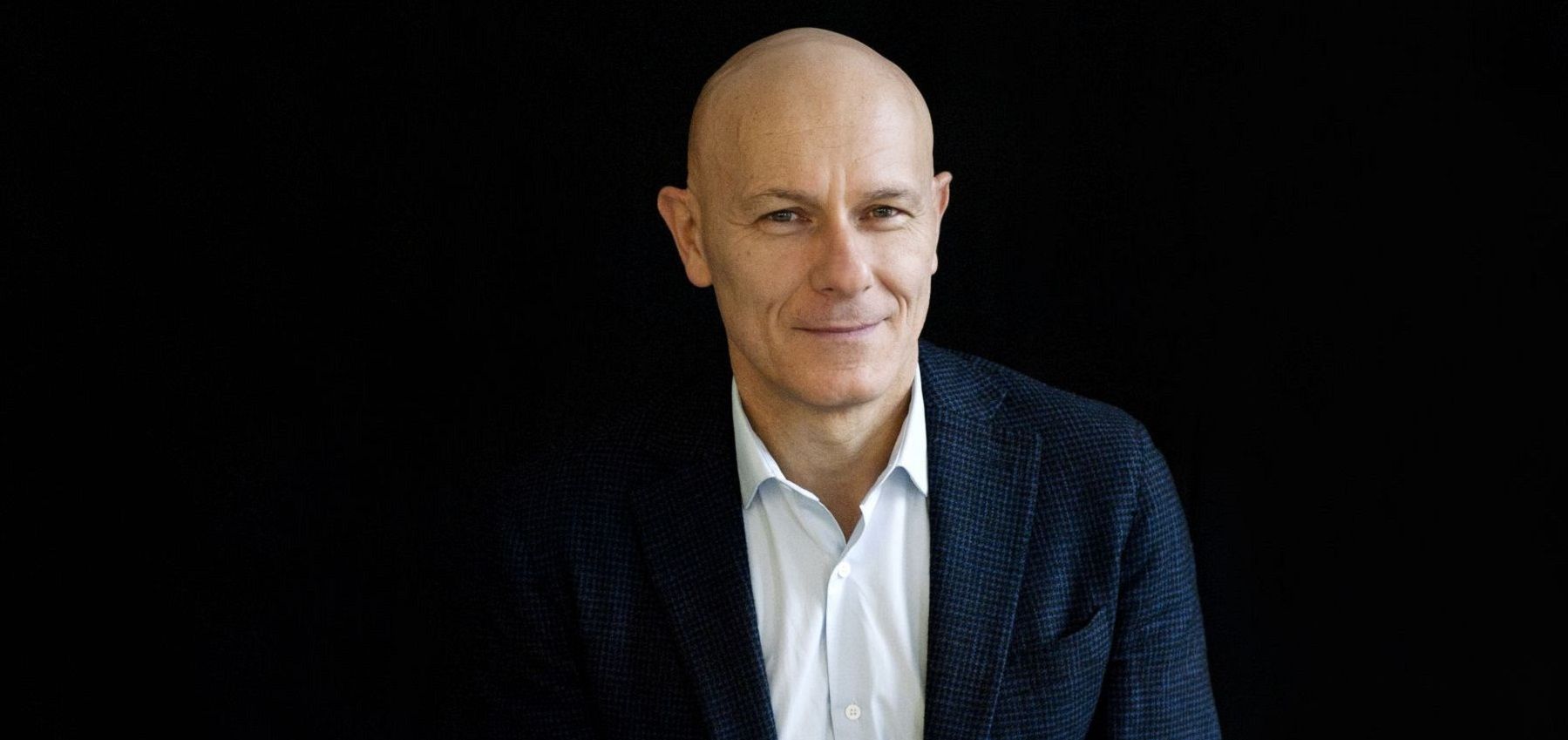“The effectiveness of branded content depends above all on its quality”
Comments gathered by Alexandra Klinnik, photos by Virginie de Galzain - Mis à jour le 28 2022
Jean-Christophe Demarta
Senior vice president of global advertising at The New York Times
Jean-Christophe Demarta is senior vice president of global advertising at The New York Times. Having grown familiar with the media world over the course of 25 years, the former director of advertising at Le Monde and the International Herald Tribune lays out his vision of the future of advertising and branded content in the digital era...
You are senior vice president of global advertising at The New York Times, a newspaper which, as it develops, is gaining more and more subscriptions – and less and less advertising. How is this choice affecting your line of work?
Jean-Christophe Demarta: In reality, it doesn't fundamentally affect
my work since there has always been advertising at The New York Times and there always will be, at least in the
foreseeable future. That said, the priorities within the company have changed.
With a reader-focused strategy the onus is put on content. Today, readers are
basically "putting up with" adverts because the latter are of a poor quality.
This is encouraging new generations to increasingly resort to ad blockers. It's
therefore in the media's interests to enhance the quality of ads. Does this new strategy mean less
investment in innovative advertising?J.C.: It all depends on what you
mean by innovative advertising. If you mean flooding sites with ads then that's
not our objective. If, however, you mean developing strategies geared towards
high quality branded content then there is indeed investment in that. We are
also looking for new media tools such as virtual reality, enhanced reality and
audio. Technology encourages the adoption of multiple forms of advertising. We
need to create high-quality advertising experiences that are both acceptable
for readers and truly effective.
«Technology encourages the adoption of multiple forms of advertising»
When it comes to branded content, in 2014 The New York Timeslaunched its T Brand Studio. What is your assessment of it today and what are the challenges?
J.C.: Five years on, it constitutes
500 campaigns carried out for some of the world's biggest companies but also
some of the smallest. Demand for branded content is still there, notably from
the brands. This strategy enables communication of a fundamental, underlying
message – a message of a corporate nature. Companies are looking for meaning
and want consumers to see their brands as responsible and environmentally
aware. Branded content lends itself to this kind of approach more easily than
to traditional advertising.
Who is your guru?
Maurice Lévy, the president of Publicis, has always impressed me. He's an incredibly effective businessman with great business sense and a great understanding of business relations. What is your mantra?
Try and stay focused on what you can change. There are domains in which we can all make a difference. That's what motivates me.How do you keep your chakras balanced?
Through the gym and through running and cycling. You say branded content is still present. In your opinion, does branded content still have potential for growth in the future?
J.C.: In effect, there is potential
for growth within a number of media domains and in markets around the world. On
paper branded content has suffered a downturn; I don't know if this phenomenon
is the same in the digital sector. One thing is for sure, however: brands will
continue to need to communicate. For the media world, it's all about focusing
on quality. Content must also be in line with the media brand and the target
audience. Unlike with advertising, the reader has a choice: they have control
over what they see. The effectiveness of a brand will depend above all on its
quality, and today there are inequalities in this area. One thing I have
noticed is that quality differs depending on the means provided to the
advertising team. Branded content requires investment: the end result is
relatively expensive. One of T Brand Studio's strengths has been the fact that
it has recruited 150 people. The more people you have working "on the ground",
the more the information you gather will be relevant and, consequently, of
quality.
Have you identified trends when it comes to branded content?
J.C.: Well there's audio, of course.
Podcasts have come back to the fore in recent times, notably in the world of
journalism. In parallel, one of the trends that I find really interesting
remains that of graphic and interactive effects. These visual aspects are
really useful when it comes to enhancing understanding of a specific topic.
Generally speaking, branded content is based above all on text and photo. Of
course, these elements can be effective, but the content that stands out the
most is that which boasts advanced visual effects. That said, we should not
fall into the trap of overdoing things, because the reader does not necessarily
have a lot of time on their hands. At
The
New York Times we also use immersive technologies. I think that the rolling
out of 5G will facilitate access to virtual reality solutions. Right now we're
in the test phase: will this be an innovation that will develop massively?
That's the big question.
At the end of December a New York Times article entitled "How Much of the Internet is Fake?" looked at the reliability of statistics related to the number of users viewing online content. What is your vision of the performance of digital advertising in general?
J.C.: It's a vast topic. We need to
rethink the way we address the issue of advert's effectiveness. The digital era
has brought with it an era of immediacy. For more than a hundred years,
advertising existed without any real direct interaction with the target
audience. Today we can count clicks, but they only tell us that someone has
clicked on a link and nothing about content quality. The rise of the digital
age has led to many abuses, such as the creation of fake advertising traffic.
Digital advertising fraud could become "the second largest source of income for
organised crime groups, just behind drug trafficking" according to the World
Federation of Advertisers (WFA). Brands are paying for adverts that are not
being viewed: this is a terrifying situation that we have to deal with. What's
more, we need to be more reasonable when it comes to measurement methods. We
need to take into account the person who didn't click on the link too. Today,
if you click, you're useful to the brand, but it's another story for the
internet user who simply saw the advert: this target is harder to identify. To
fix this we need to move towards better quality in a context where even the
smallest, simplest websites have advertising.
Finally, what are the trends that you have identified in 2019? What are your plans?
J.C.: Branded content is a form of communication
that should grow at a rate of 5% per year, bringing with it some interesting
developments for all relevant stakeholders: the media, brands and content
providers. One of the other trends will be the way we measure effectiveness.
Why do Google and Facebook perform so well? Because advertisers have the
impression that with them their advertising works. Even though the
social network has been the subject of numerous scandals it continues to be
very effective on the marketing front. Advertisers are not philanthropists:
they are looking for spaces that offer them high quality and that work, and we
need to be able to meet those demands. We have spent a lot of time resolving
technical problems while Facebook, little by little, has been creating its own
world with much fewer problems. Now it's time to knuckle down... 







Suivez-nous
|